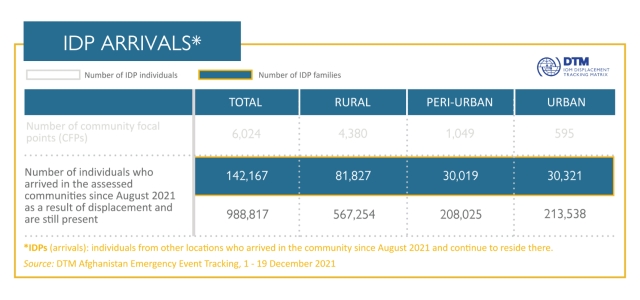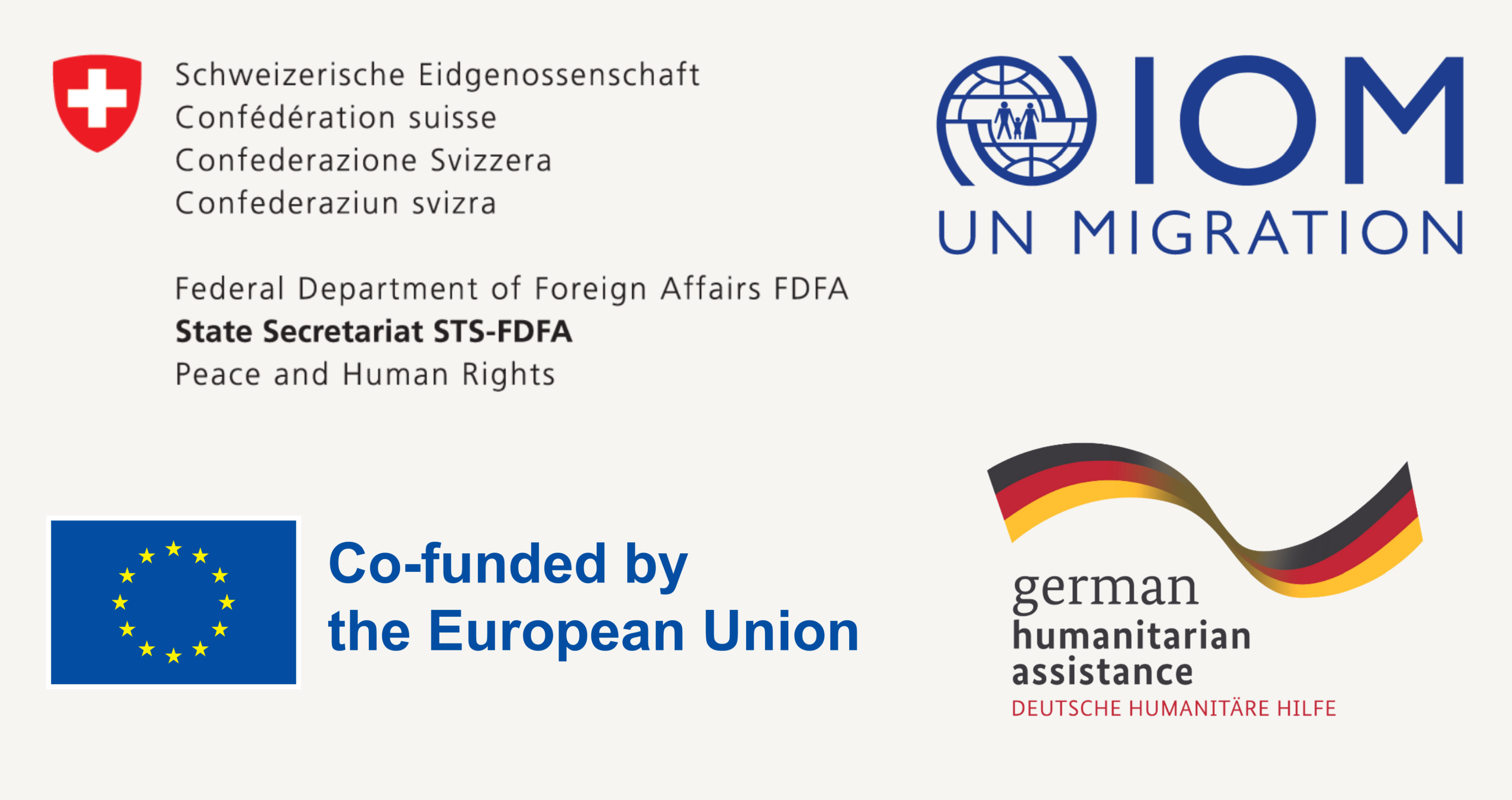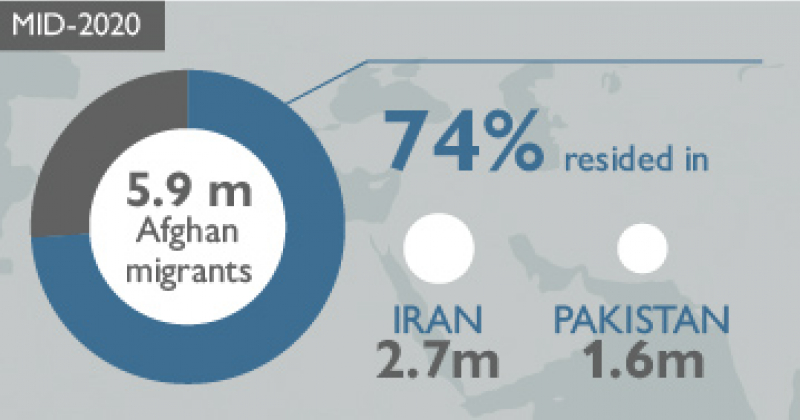
Afghanistan’s recent security developments have implications for migration and mobility on a nation that has already experienced more than 40 years of conflict, persistent natural disasters, chronic poverty and food insecurity.
The reports, data, and news on this page are a collection of public source information pertaining to Afghanistan and are relevant to a wide range of migration topics. The featured content does not constitute an endorsement of the content nor reflect the views of IOM, its donors and its partners.

IOM has recorded the deaths of more than 1,600 Afghans on migratory routes across Asia and Europe since 2014. It is likely that many more go unrecorded.

Click on the infographic for details and to access the Global Migration Data Portal's interactive dashboard for more data on Afghanistan.
Disclaimer: This webpage curates public information and data. The opinions expressed in this webpage are those of the authors and do not necessarily reflect the views of the International Organization for Migration (IOM), nor its Member States and other stakeholders. The designations employed and the presentation of material throughout the webpage do not imply expression of any opinion or endorsement whatsoever on the part of IOM, its Member States and other stakeholders concerning the legal status of any country, territory, city or area, or of its authorities, or concerning its frontiers or boundaries. While the portal section "Afghanistan: Migration statistics, policy and news" has been made possible with funding from the European Union, the German Federal Foreign Office and the Federal Department of Foreign Affairs (FDFA) Switzerland, the contents on this section do not necessarily reflect their official policy or position.
















